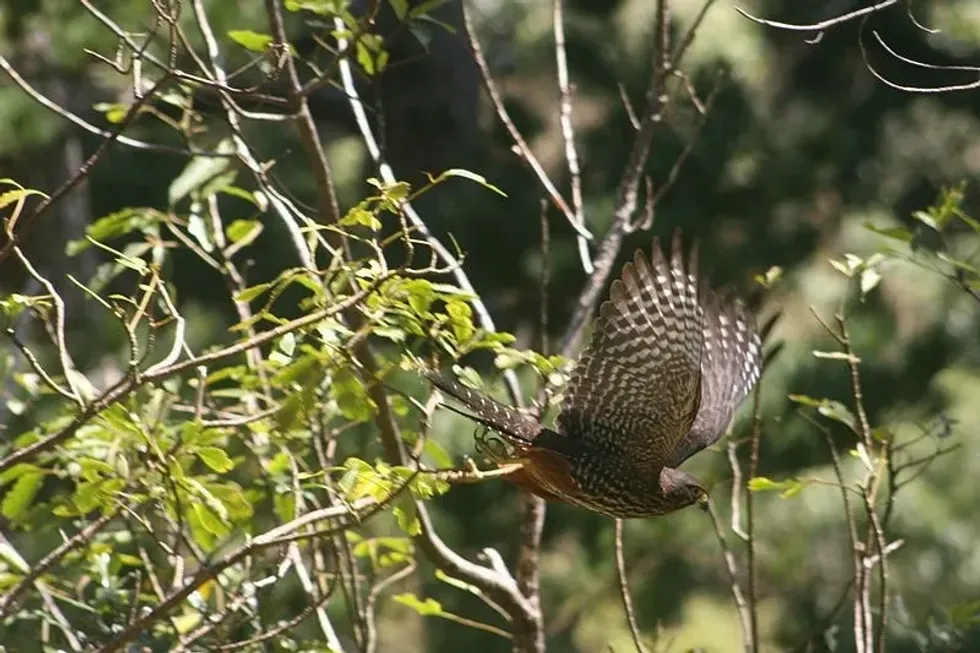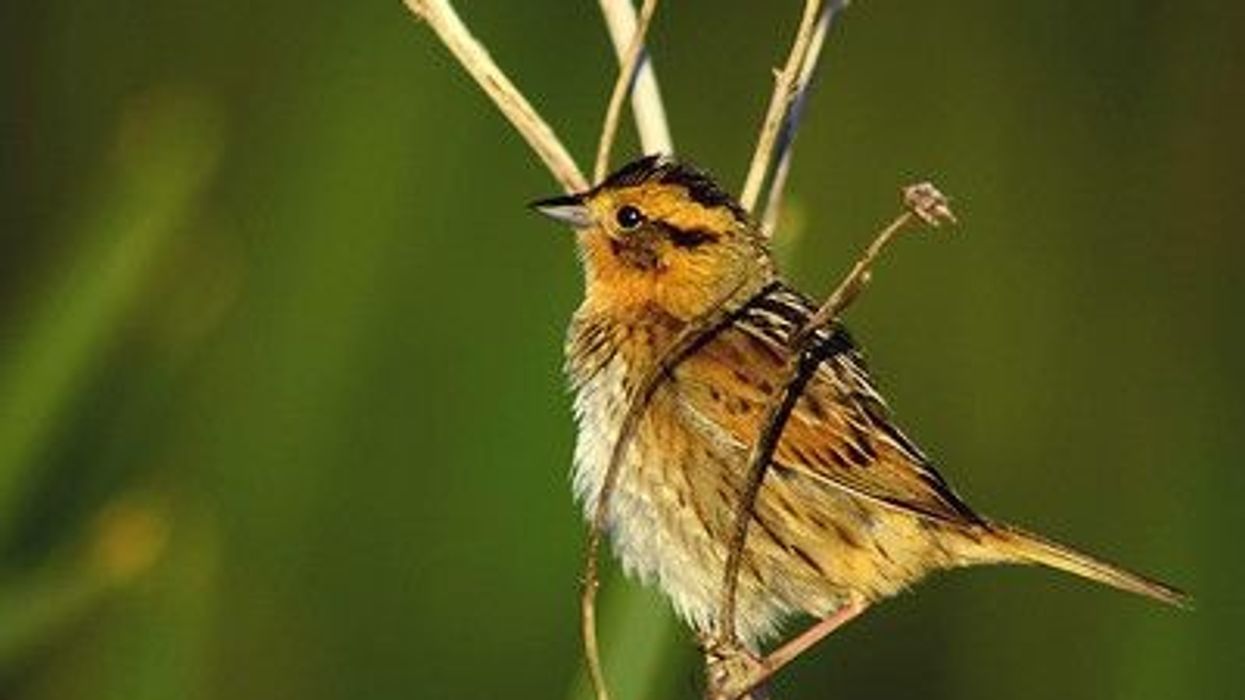The New Zealand falcon (falco novaeseelandiae) is a bird of prey, mostly found in water bodies like for example it resides in Auckland islands, Fiordland Stewart island, Stewart island, and generally in the south island and north island.
This bush falcon is a threatened species of north island , it consists of some sub species which include falcon karearea, NZ falcon or New Zealand falcon is the only falcon found in New Zealand.
This bird commonly known as endemic raptor differ from other falcons in their size, color, wings and tails.
Some of the habitat also differ like the breeding process in which some falcons make nest on the ground while some falcons lay eggs in any other bird nest.
The New Zealand falcon is mainly reported for attacking dogs as well as harming people too. The food habitat is almost identical in these birds of prey; they live in the north, south, on islands having different habitats.
Forest, woods , ground is not their main home but sometimes come to escape from shooters. This bird catches live prey to feed themselves.
These birds of prey are quite rare to find as their population is declining due to several factors, and climate declining as being one of them. They are quite similar in terms of physical appearance to harrier bird.
For more relatable content, check out these rusty blackbird facts and pitta bird facts for kids.
New Zealand Falcon Interesting Facts
What type of animal is a New Zealand falcon?
A New Zealand falcon (Falco novaeseelandiae) is a bird of prey, and it is a type of falcon birds species. Some other types of falcons are Lanner falcon and saker falcon.
What class of animal does a New Zealand falcon belong to?
New Zealand falcon belongs to the Aves class of animal, from the phylum Chordate.
How many New Zealand falcons are there in the world?
The definite number of New Zealand falcon kārearea present in the world is unknown.
Where does a New Zealand falcon live?
New Zealand falcon are bird of prey, which usually live in woodland, grassland, forest and bush. They reside mostly in the south of Hamilton.
Eastern falcons are found in open dryer areas of the world . They also live in water bodies and mainly live where they can easily prey on animals. The falcon kārearea prefer to live in bushy areas and steep high countries, particularly in the south island.
What is a New Zealand falcon's habitat?
The New Zealand falcon bird of prey mainly exists everywhere on the planet, their habitat can be found from forests to islands and these falcon species are also found in the arctic north to the dry southern deserts.
The New Zealand falcon, or any species of falcon, mostly resides in wide open areas and they do not build nest for laying eggs as like other birds.
They prefer laying eggs on any other bird nest or any of the human made building .
Falcons remain less on ground and prefer more to fly in the sky and can fly long distances. Their main habitat is islands and water bodies.
Who do New Zealand falcons live with?
New Zealand falcon falco novaeseelandiae are birds of prey that usually live in breeding pairs or we can say in packs.
How long does a New Zealand falcon live?
New Zealand falcons lifespan is nearly 12-15 years, still the mortality rate of young falcons is about 60% and out of 10 falcon around 5-6 die in their first year itself. The same number of years is applicable to southern falcons as well as eastern falcons. They mainly live in the Auckland islands .
How do they reproduce?
The breeding season of New Zealand falcons generally takes place during summer or spring, having clutch size 1-4 . The process of incubation is generally shared by both a male and female hawk; but when it comes to brooding, it is a task which is done by the female hawk or falcon.
The female falcon lays its eggs on a simple scrape on the ground while the eggs are covered with so many layers to protect them. These birds lay 2-3 eggs at one time.
This breeding process in hill country nest are mainly made on a heighted area or a slope by the hawk.
Breeding in forest is possible in an area surrounded with trees. The southern and eastern falcon also follows the same breeding process in the country.
What is their conservation status?
The New Zealand falcon conservation status is Nearly Threatened (population decreasing). These falcon are threatened because of the decline in population. Factors like habitat degradation has also resulted in decreasing population.
The persecution of these birds is so common throughout New Zealand and some falcons are shot at frequently. There are around 3000-5000 in pairs. They have been under the protection of the wildlife in many regions, as they are Nearly Threatened.
New Zealand Falcon Fun Facts
What do New Zealand falcons look like?
New Zealand falcons look like they have long tail and pointed wings, with upside down teardrop shaped silhouette. But in these NZ falcon birds the size of male falcon is quite smaller than female falcons.
They have the body weight of around 0.91 lb (720 g), and a body length of between 16-20 in (40-50 cm). The newly fledging and juveniles are dark brown in color, with cream streaks on the upper part and shade of blue grey in the eye ring.
Falcons and swamp harrier are quite same in resemblance and openly arrive New Zealand from Australia. The black color falcons are more sooty and have more pointed wings.
How cute are they?
This bird of prey, even though they may be dangerous, they have a cute overall looks. However, their predatory nature makes them look aggressive and scary.
How do they communicate?
The sound of 'kek' 'kek' is made during the breeding season, the kārearea falcons or NZ falcon call, made by the female is much high than a male's pitch. Adults also makes a voice like 'chitter' between normal falcon interactions.
How big is a New Zealand falcon?
New Zealand's falcons have a body size of around 16-20 in (40-50 cm), which is 10 times bigger than a belted kingfisher.
How fast can a New Zealand falcon fly?
The New Zealand falcon flying speed is of around 62.1 mph (100 kph) and it preys on creature having larger size than them.
How much does a New Zealand falcon weigh?
The weight of these birds can reach 0.91 lb (720 g).
What are the male and female names of the species?
The male falcon is called tercel and the female falcon is called falco novaeseelandiae.
What would you call a baby New Zealand falcon?
The youngs of the New Zealand falcon are called karearea or chicks in general.
What do they eat?
They are carnivorous in nature and mainly feed on all types of animals, including insects, animals, reptiles, and so on. These birds are known to feed highly on other birds too.
Are they dangerous?
As a carnivores species of bird, they can be quite dangerous to approach.
Would they make a good pet?
It is uncommon to have them as pet, as they require a meaty diet which can be quite complicated for people. Also, they prefer forests habitats instead of cages.
Did you know...
These birds are rare in south islands but are common in Auckland islands . The bush falcon is quite dangerous but can be kept as a pet by people who have an experience rearing birds, of more than 7 years.
Is the New Zealand falcon protected?
These birds have been under the protection of the wildlife in some regions as their population is decreasing.
NZ Falcon vs hawk
In terms of the physical difference, their color and shape almost look same but hawk is a bit bigger than the falcon karearea. The breeding process of hawks include nest but the falcons do not use their own nest in many cases.
These birds are more harmful than hawks and the species of this bird are commonly found in New Zealand but the NZ native hawk is not so common. The NZ falcon, which are endemic to north island and south island, is also a harrier who attacks others.
Here at Kidadl, we have carefully created lots of interesting family-friendly animal facts for everyone to discover! For more relatable content, check out these Anna's hummingbird facts and bowerbird facts pages.
You can even occupy yourself at home by coloring in one of our free printable bird coloring pages.









